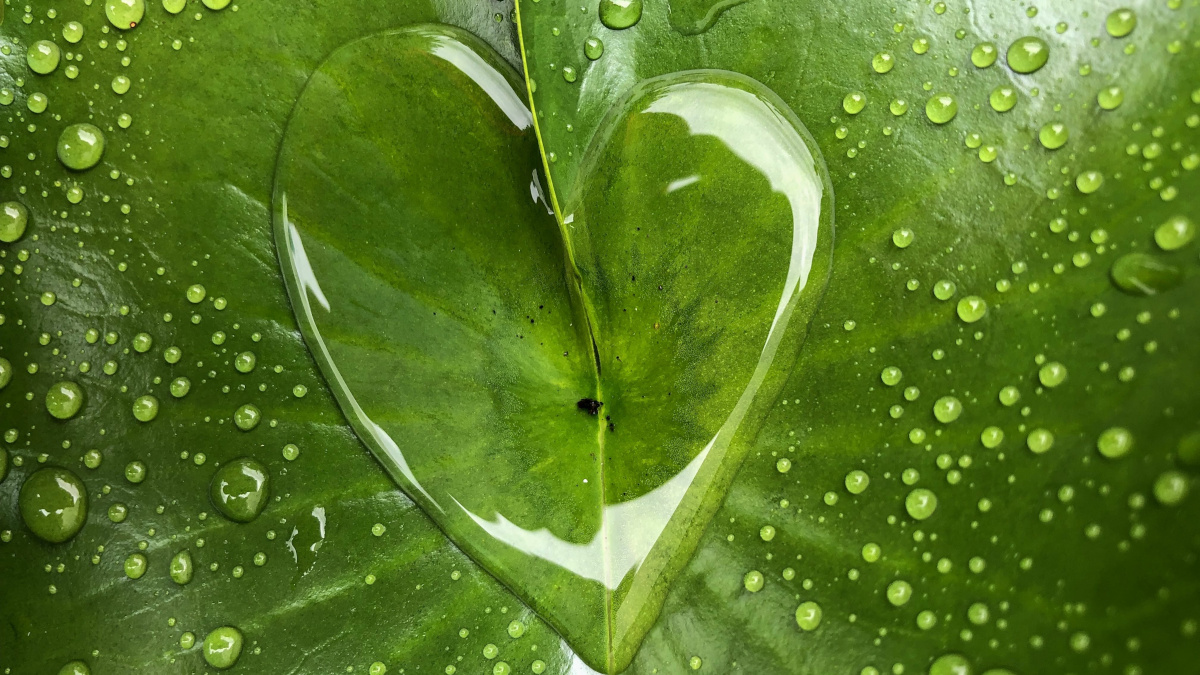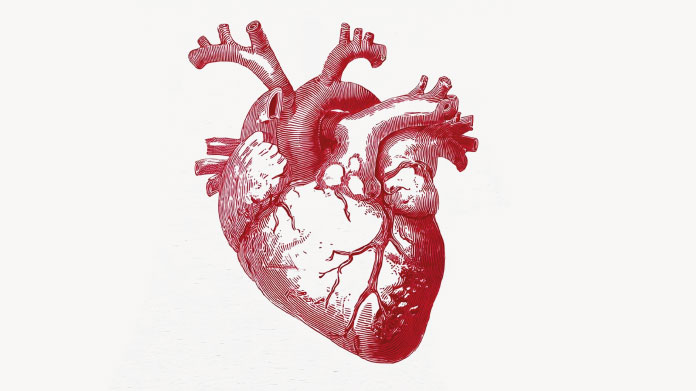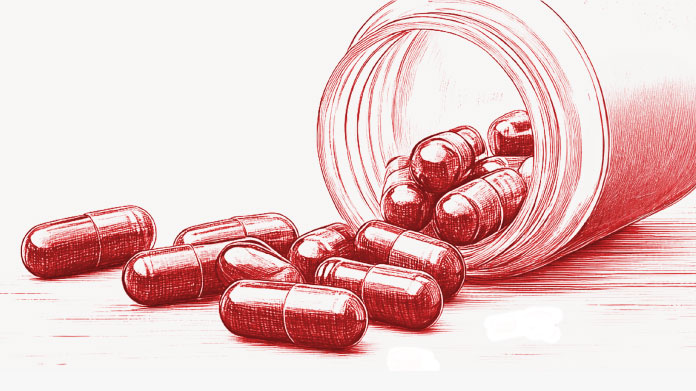The 6 best medicinal plants for the heart
Since ancient times, humans have used the image of a heart to depict the concept of life. They quickly learned how to identify those plants which support a healthy cardiovascular system. Discover the 6 most effective such plants.

Hawthorn and cardiac health
Hawthorn is shrub often found growing at the edge of forests. Featuring sharp thorns, it is widely utilised in phytotherapy, where all parts of the plant are used:
- the buds;
- the flowering tops when white in color;
- and the red berries.
The plant is known to help support normal function of the cardiovascular system(1). It appears to act more specifically on oxygenation of the heart and exercise tolerance. It is available in the form of dietary supplements (such as Cardio Booster, which also contains B12 and Q10... or Tensix, a formulation rich in celery and potassium).
Lemon balm helps support the circulation and heart
Lemon balm is a plant with mint-like leaves. It has a similar scent to lemongrass or verbena, and is often used to make infusions.
Native to the Mediterranean basin, this plant now grows in any region with a temperate climate.
In phytotherapy, it is the leaves, flowers and stems which are normally used as they are known to support healthy circulation and thus the cardiovascular system in general (2).
Olive leaves and blood pressure
Theolive tree is a favorite with garden designers for its typically Mediterranean look. It does indeed grow primarily on the Mediterranean coast, in the south of France and in the Maghreb.
Mainly used for its fruit, olives, which are enjoyed in many forms (whole, pieces, oil, etc), this tree is also of interest for its leaves, which contain active ingredients widely utilised in phytotherapy.
Oleuropein, a phytochemical compound derived from olive leaves, has blood pressure-regulating properties (3). You can incorporate extract of olive leaf into your diet by taking a supplement (for example Olive Leaf Extract).
Horse chestnut for your heart and venous system
Growing to around 10 meters in height, horse chestnut is called ‘marron d’Inde’ in French – ‘Indian chestnut’, though it is actually indigenous to modern Turkey. Introduced into Europe in the 16th century, the word ‘Inde’ was added because, as with many exotic plants of that period, it was perceived to have added value if it came from India.
The benefits of horse chestnut come from its bark, buds and seeds, the chestnuts.
It has many applications in phytotherapy, the most remarkable of which are related to cardiac, vascular and venous health (3). Horse chestnut is particularly recommended for poor venous return (try, for example, the product Horse Chestnut).
The Ayurvedic herb Centella asiatica
The Ayurvedic plant Centella asiatica (or ‘tiger grass’) is described as semi-aquatic. It flourishes in marshy areas in the tropics. It is found primarily in Indonesia and Madagascar.
In phytotherapy, it is the plant’s leaves and stems which are used for their natural properties.
Centella asiatica is recommended for people with vein problems as it supports cardiovascular and venous health (5). It is also beneficial for mental health and cognition. It can be found in supplement form (for example, in the product Centella asiatica).
Yellow sweet clover for healthy circulation
Yellow sweet clover is a plant indigenous to Europe and Asia. It has a strong smell of cut hay and as a result, is widely used in the perfume business.
In phytotherapy, it is the flowering tops which are used for their content in coumarin, a beneficial substance with venotonic properties.
Yellow sweet clover is known for its efficacy in supporting vein and vascular health, and thus the cardiovascular system as a whole (6). Coumarin, its main active compound, is the key ingredient in certain supplements (such as Lymphatonic, a sweet clover product standardized to 18% coumarin).
References
- Tassell MC, Kingston R, Gilroy D, Lehane M, Furey A. Hawthorn (Crataegus spp.) in the treatment of cardiovascular disease. Pharmacogn Rev. 2010;4(7):32-41. doi:10.4103/0973-7847.65324
- Alijaniha F, Naseri M, Afsharypuor S, Fallahi F, Noorbala A, Mosaddegh M, Faghihzadeh S, Sadrai S. Heart palpitation relief with Melissa officinalis leaf extract: double blind, randomized, placebo controlled trial of efficacy and safety. J Ethnopharmacol. 2015 Apr 22;164:378-84. doi: 10.1016/j.jep.2015.02.007. Epub 2015 Feb 11. PMID: 25680840.
- Barbaro B, Toietta G, Maggio R, et al. Effects of the olive-derived polyphenol oleuropein on human health. Int J Mol Sci. 2014;15(10):18508-18524. Published 2014 Oct 14. doi:10.3390/ijms151018508
- Pittler MH, Ernst E. Horse chestnut seed extract for chronic venous insufficiency. Cochrane Database Syst Rev. 2012;11(11):CD003230. Published 2012 Nov 14. doi:10.1002/14651858.CD003230.pub4
- Razali NNM, Ng CT, Fong LY. Cardiovascular Protective Effects of Centella asiatica and Its Triterpenes: A Review. Planta Med. 2019 Nov;85(16):1203-1215. doi: 10.1055/a-1008-6138. Epub 2019 Sep 20. PMID: 31539918.
- Najmanová I, Doseděl M, Hrdina R, Anzenbacher P, Filipský T, Říha M, Mladěnka P. Cardiovascular effects of coumarins besides their antioxidant activity. Curr Top Med Chem. 2015;15(9):830-49. doi: 10.2174/1568026615666150220112437. PMID: 25697565.
Keywords
5 Days
A Product worth waiting for when not…
A Product worth waiting for when not available and then arriving as a surprise!
DOMINIC
7 Days
On time shipping
On time shipping
GEORGE Verne
9 Days
Ordering was easy and the product was…
Ordering was easy and the product was delivered with no problems. Appreciated that I was notified when it would arrive. Thanks!
MascarC
14 Days
Great customer service - responsive …
I ordered from them and my item was unavailable for sometime. I was super happy when they reactivated my order and shipped my item which arrived very quickly. Great customer service.
Ruth Rueter
15 Days
Super fast shipping
Super fast shipping
Donald Borling
18 Days
Reputable companysearch and the number of…
The research and the number of selection of products.
NAKHJAVAN Shervin
31 Days
The Anti Aromatase is a great product
The Anti Aromatase is a great product. You just need to have constant inventory. Recently this product has been out of stock.
GEORGE Verne
33 Days
Great help on chat
Great help on chat. Knowledgeable and friendly.
Jason Argos
36 Days
Customer service was fast and friendly.
Customer service helped to stop the transaction process of the subscription. I appreciated that.
Greenie
37 Days
I order here due to the high quality of…
I order here due to the high quality of the products and the quick delivery of items - thank you
Barbara J
38 Days
SuperSmart's Eye Pressure supplements: highly recommended!
I purchase SuperSmart's Eye Pressure supplements regularly for over 5 years, and gotta say they are truly a wonderful product for my Glaucoma. Highly recommended if you have eye pain from your Glaucoma.
D. Martinez
43 Days
Quick service
Quick service
MONELL
43 Days
Speedy service.
Speedy service.
ROSENTHAL Marvin
47 Days
Clear website- Efficient
Clear website. Excellent search engine and fast delivery!
Mohamad Hussein
50 Days
They have great products.
They have great products.
Vickie


.jpg)
